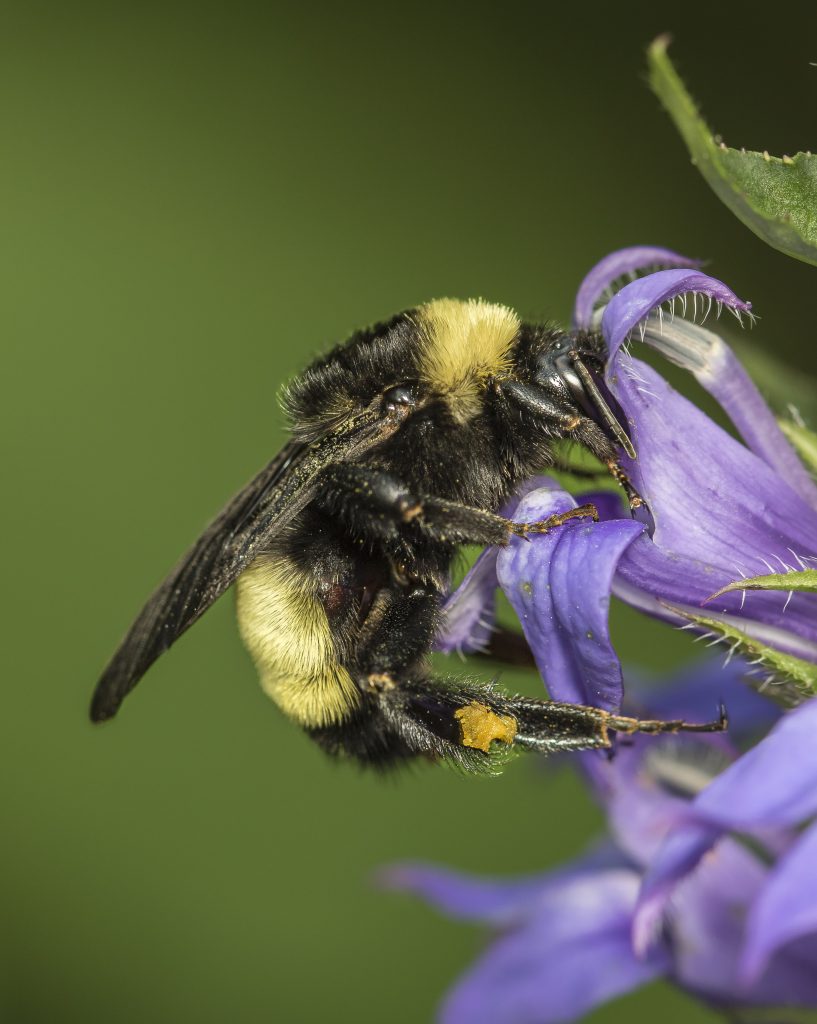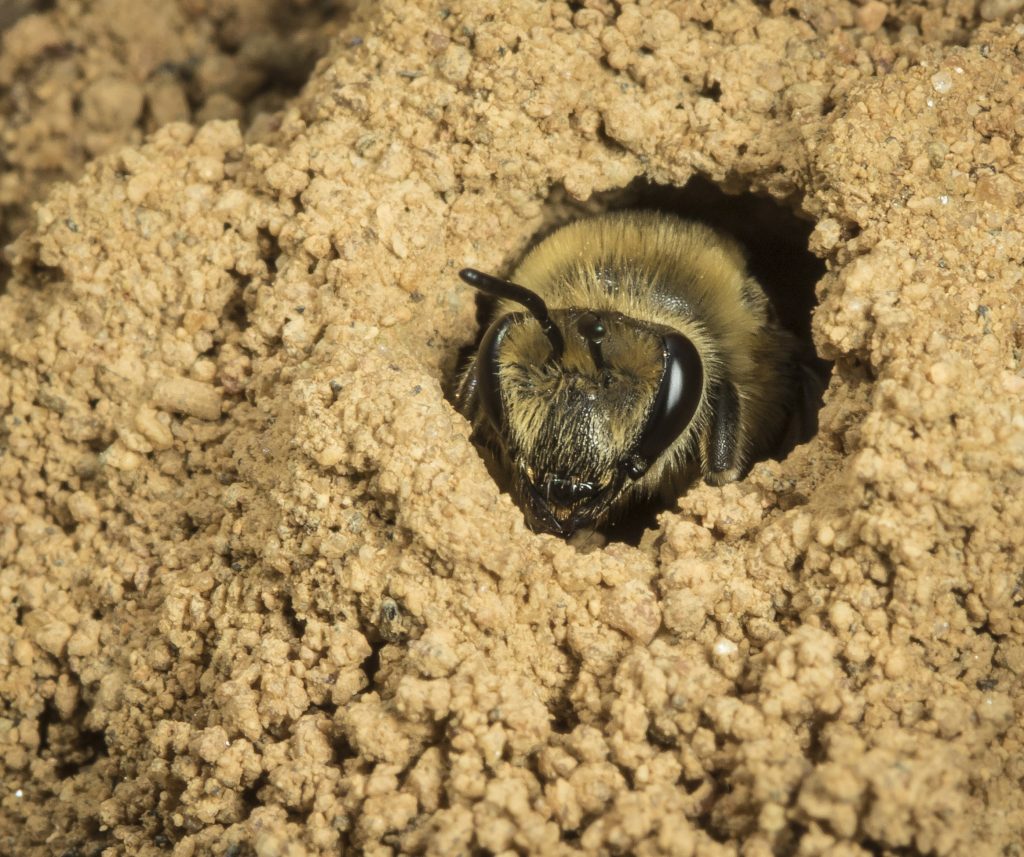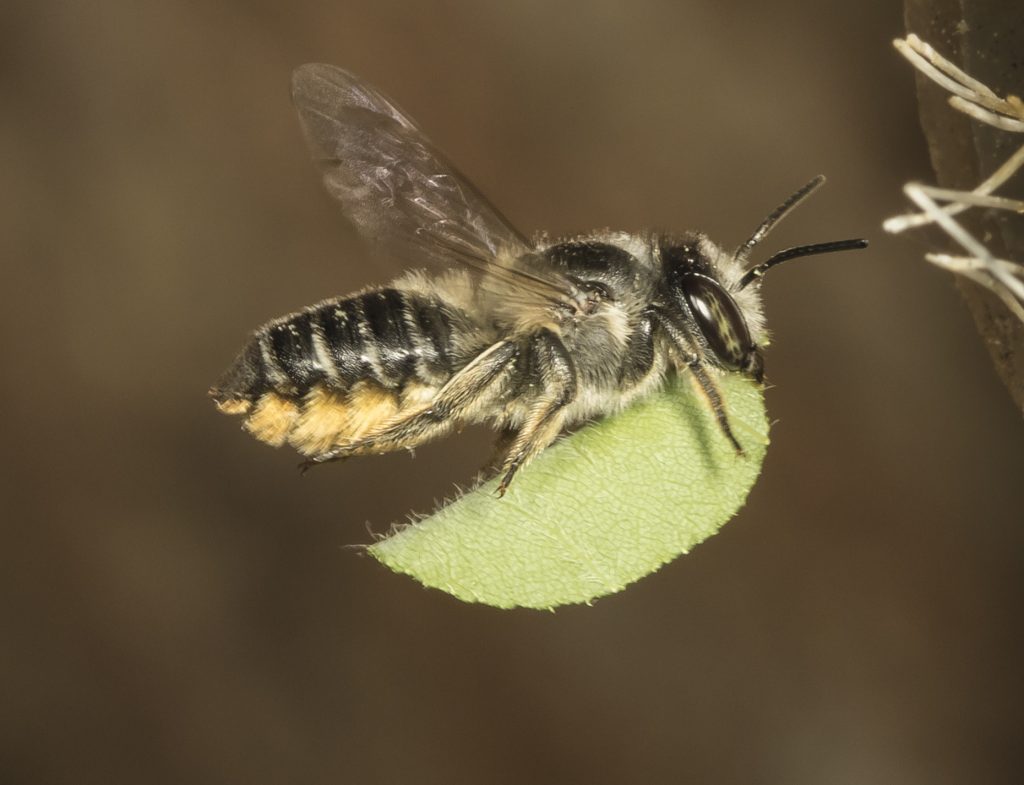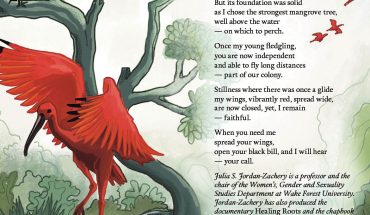Take a closer look at these fuzzy, fascinating pollinators — they have some bizarre behaviors and specialized skills.
by Mike Dunn
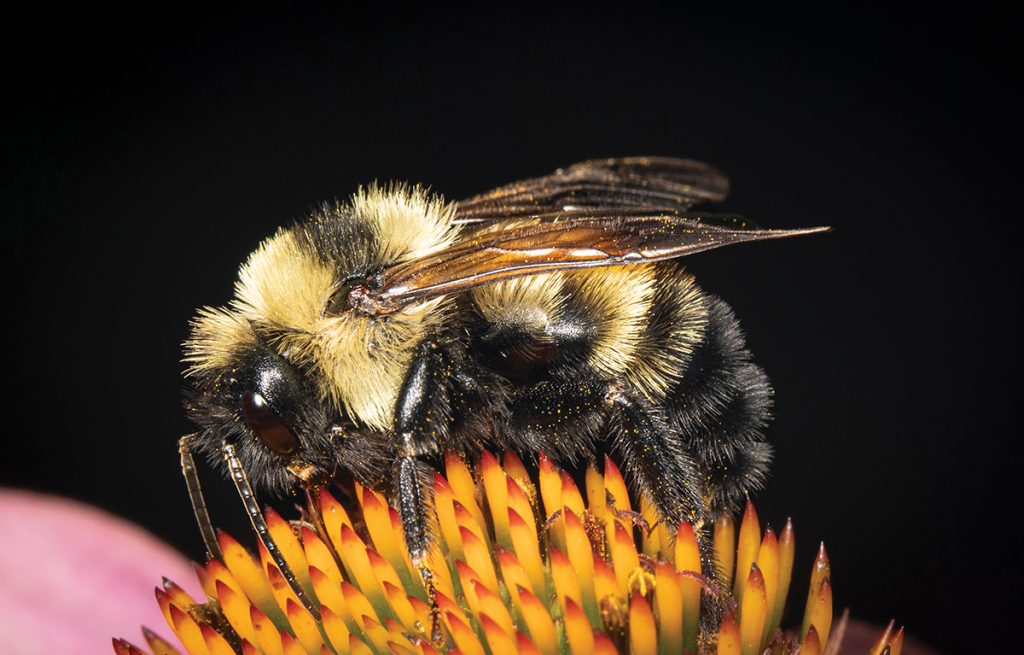
I’ve always been interested in pollinators and native plants, but my three years of working at the North Carolina Botanical Garden really helped me understand their connections. Bees are unique in that they rely on pollen as food for their larvae and have branched hairs somewhere on their bodies that are excellent at accumulating pollen as they visit flowers.
More than 80% of the flowering plants in the world and at least a third of our crops depend on animal pollinators, and bees are the primary workers. Honeybees, a non-native species, get most of the publicity because they are critical as pollinators, especially for farmers. But we have 560 native bee species in North Carolina that are also very important.
With the abundance and variety of native plant species at NCBG, I couldn’t help but notice many bee species that were new to me. Here are a few of the more interesting ones that I’ve observed.
Bumblebees
North Carolina’s 15 species of bumblebees are very efficient pollinators, and they are generalists, meaning they pollinate many different plant species. They’re fast workers, too, using their bulk to push their way into many flowers other insects can’t. Bumblebees tend to be quite fuzzy, which causes pollen to stick to them better, and they can forage at lower temperatures and light intensities than most other pollinators.
They are also excellent “buzz pollinators,” which means they can use sonic vibrations from their wing musculature to dislodge pollen. This is important for plants like tomatoes and blueberries that do not release their pollen easily. These social bees nest in colonies underground, in places like old rodent burrows, or above ground in rock piles, inside bird houses, or other cavities.
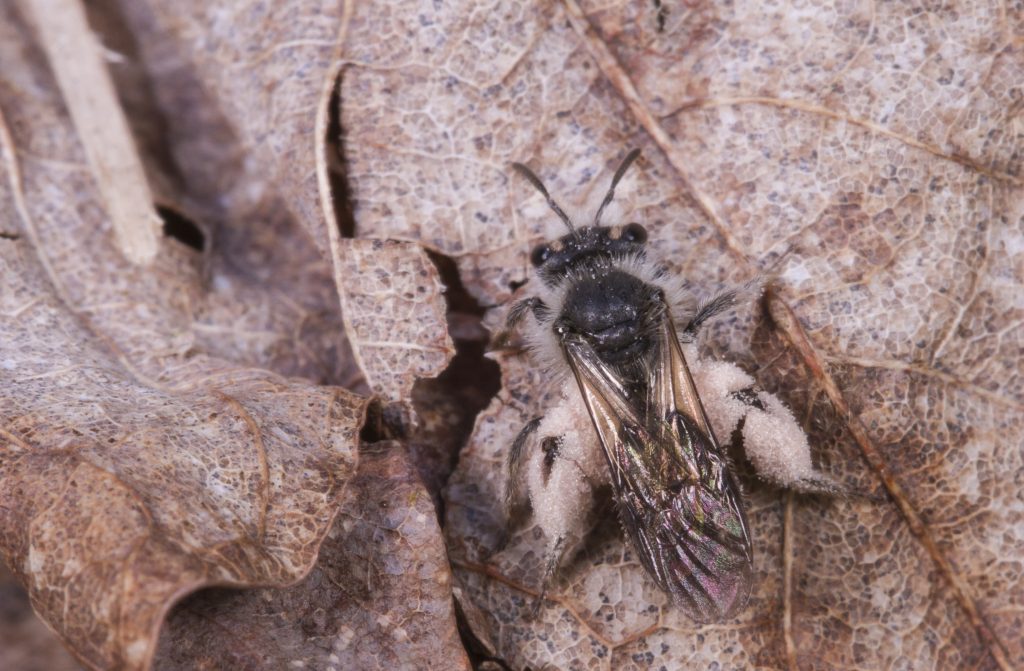
Spring Beauty Bees
Most of our native bee groups are solitary nesters (which makes them much less likely to sting, by the way). One of the so-called mining bees (this group digs into soil to make a nest chamber) is the Spring Beauty Bee. It is a pollen specialist, collecting pollen only from its namesake flower, the Spring Beauty. I have occasionally seen one covered in the bright pink pollen of these early bloomers.
The female of this species is hairier than the male, and she uses the pollen that accumulates on her body to form a pink ball, which she places underground into brood chambers that she’s already dug. She lays a single egg on the pollen ball for the larva to eat when the egg hatches. The larva then pupates over the winter and an adult emerges the following spring — just in time to visit the blooming Spring Beauties.
Cellophane Bees
I encountered another type of mining bee on an early spring hike at Johnston Mill Nature Preserve, a Triangle Land Conservancy property in Orange County. My wife and I noticed a distinctive small bee with a striped abdomen on many of the blooming spring ephemerals. We soon found a concentration of these bees flying low over the ground. I knelt down to photograph one on the leaf litter, and as I focused for another shot, it disappeared into the leaves. That’s when I noticed a nearby mound
of soil with a pencil-sized hole.
We watched these bees for a while and discovered what looked like a colony scattered over a large swath of ground in the floodplain of the creek. Many of the entrance mounds to their burrows were partially hidden in the leaf litter, but all were about the size of a golf ball with one hole near the top. The bees appeared to be going into the burrows laden with pollen and then exiting free of that cargo, presumably having stored it for their soon-to-be developing young. These are a type of plasterer bee (also called cellophane bees); my best guess is Colletes inaequalis, the Unequal Cellophane Bee.
The reason they are called plasterer or cellophane bees is that females produce a type of polyester that becomes the brood cell for their young. Though these bees are solitary (a female digs her own burrow and tends it herself), they tend to nest in aggregations, sometimes in groups of hundreds or more, especially in sandy soil on south-facing slopes.
The female creates several brood cells that resemble small plastic bags inside chambers of a foot-deep tunnel, stocks them with a liquid pollen and nectar mix, and then suspends one egg above the food larder in each cell.
People are often alarmed at finding aggregations of these bees in their yards, but there is no need to be concerned as they tend to be quite docile. They are among the earliest bees to be active and live only for a few weeks before the entire colony is reduced to the developing larvae and pupae living underground until the following spring.
Leafcutter Bees
One April morning, I had a close encounter with a different native bee with another unusual nesting habit. I caught a glimpse of a green object near the entrance of a piece of plastic tubing in the yard. The green object hovered near one end of the tubing, then disappeared inside.
It looked like the work of a leafcutter bee, a native bee whose handiwork I see every spring. These bees make small round holes in the edges of leaves and then use the circles of leaf material to make their nest chambers in hollow tubes or in the ground. The apt genus name of this group of bees, Megachile, comes from a Greek term meaning big lip.
I set up my camera and caught a bee carrying a folded piece of Redbud leaf as she approached the entrance to the tubing. She quickly went inside (I could see her movement inside the translucent tube) and took the leaf fragment to a mass of other greenery a couple of inches inside the tube entrance. She stayed a little over a minute and quickly departed. Within two minutes, she was back with another, smaller piece of leaf and repeated the sequence.
But on her next visit, she was not carrying anything green. This time, it was a load of pollen. That’s because each nest contains several cells. The female stocks each cell with a loaf of stored pollen and then lays a single egg in each; each cell will produce a single bee. Most leafcutter bees overwinter in the nest chamber as newly formed adults and then chew their way out the following spring.
This is just a small sample of some of the fascinating life histories of our native bees. The more I learn, the more I realize that our native bees are truly bee-autiful and bee-zarre, so get out there and see some bees this spring.
This article originally appeared in the April 2024 issue of WALTER magazine.

